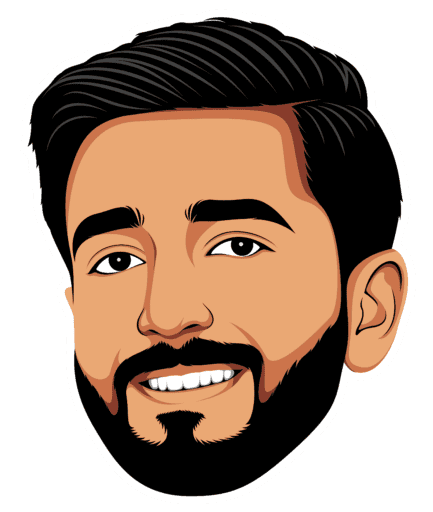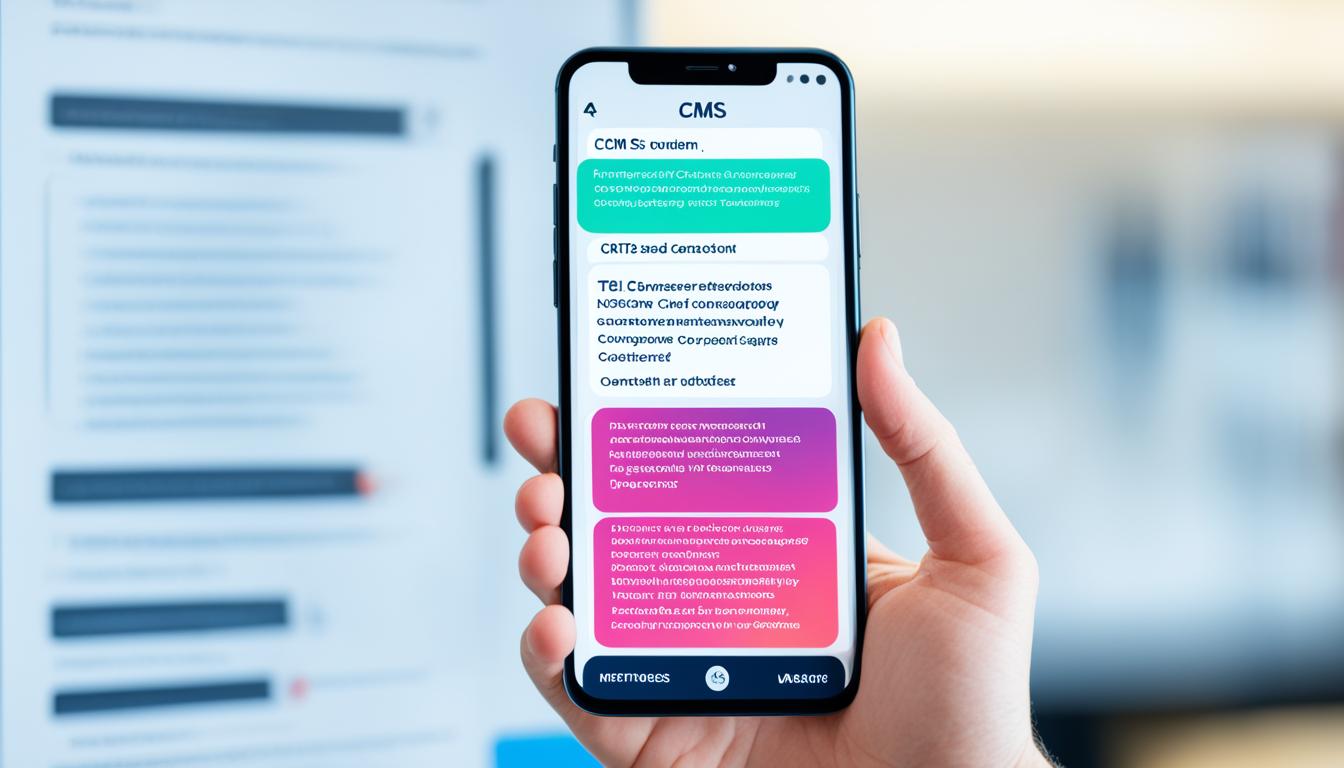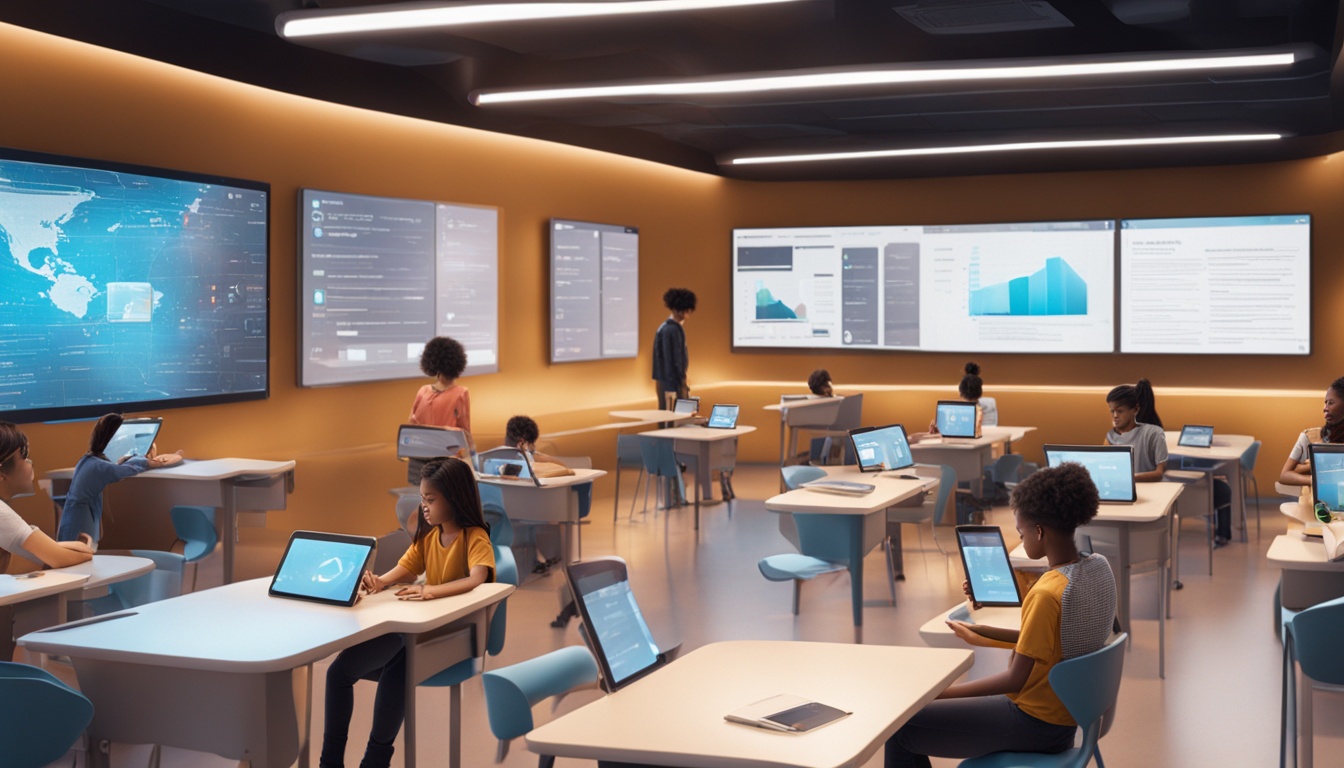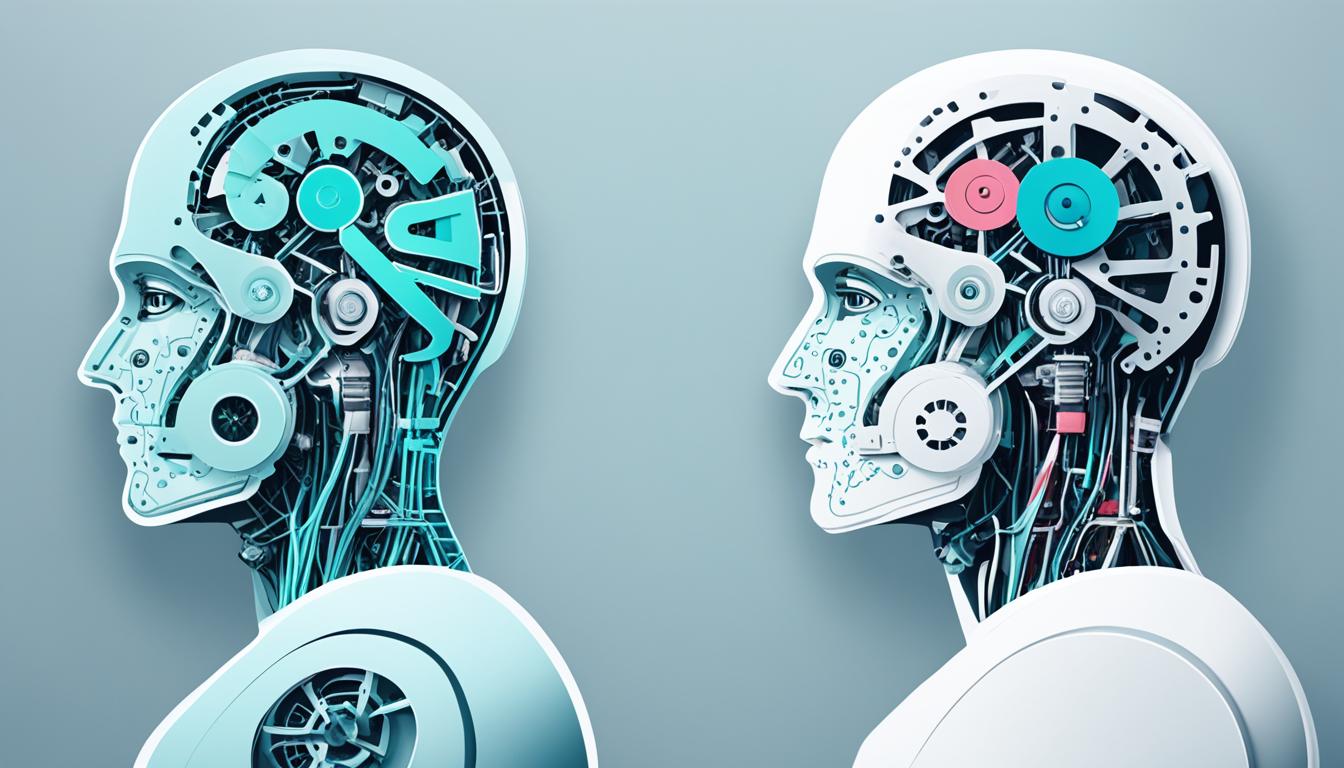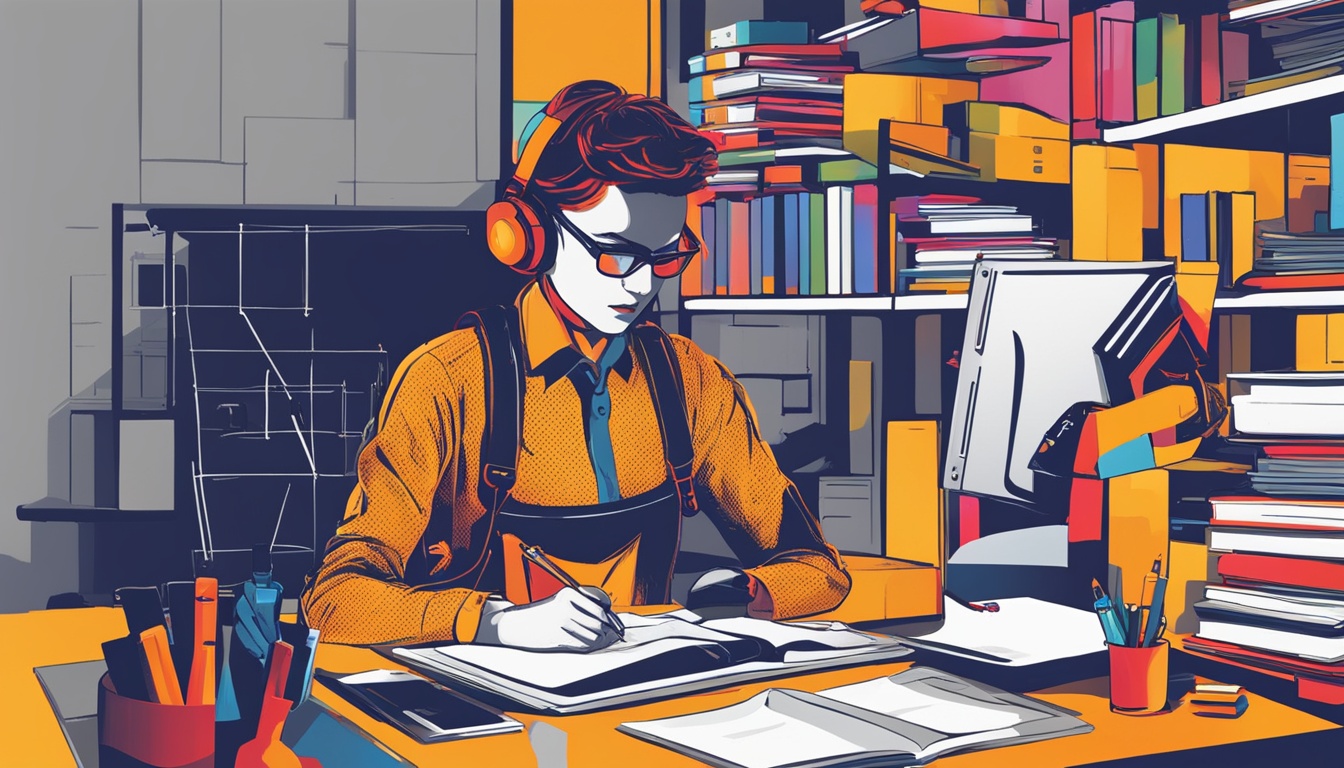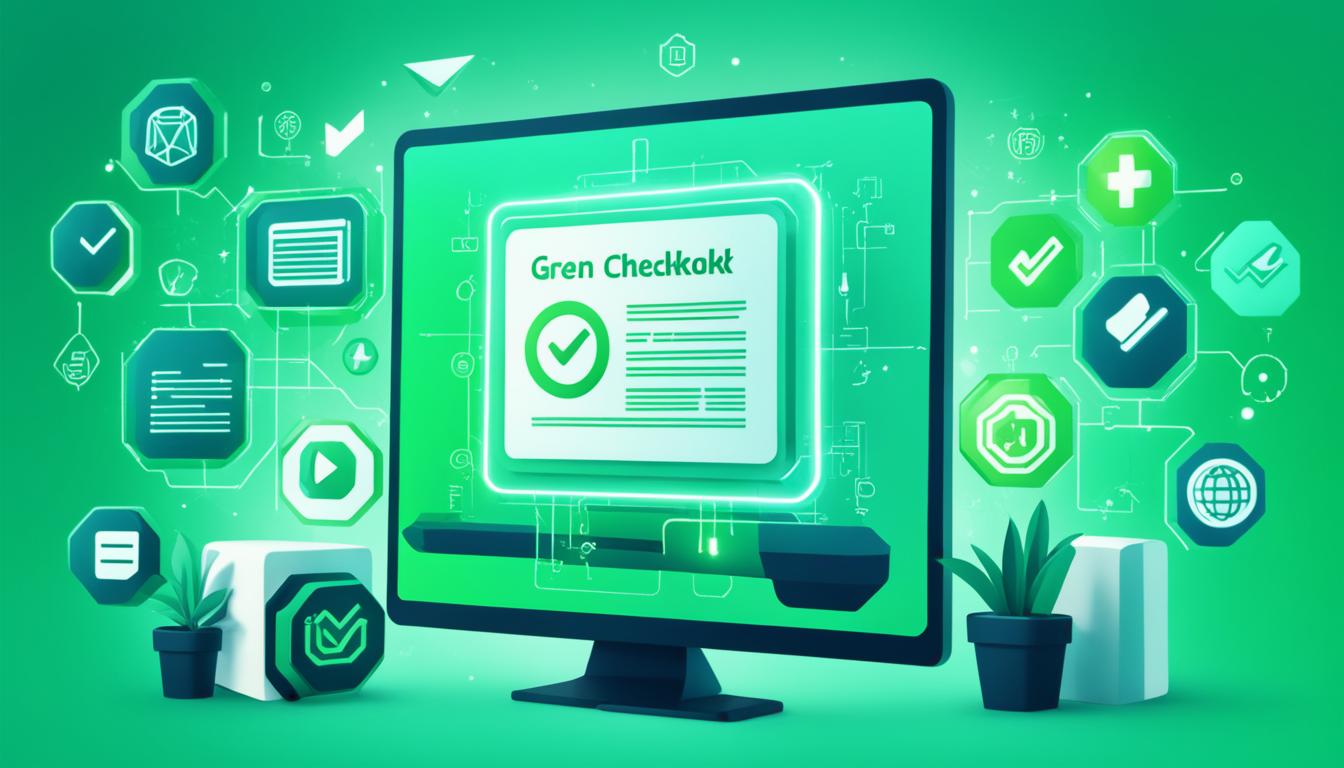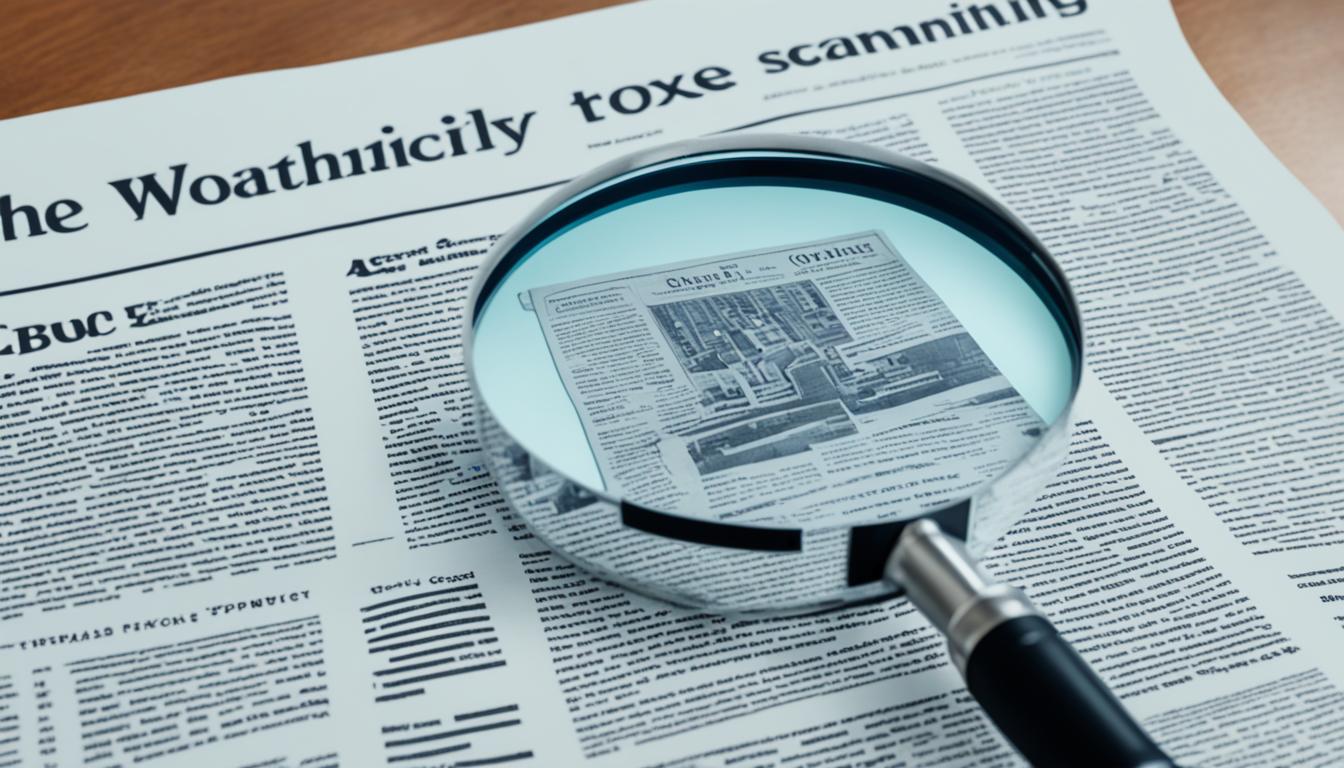AI Plagiarism Detection: Combating Academic Dishonesty
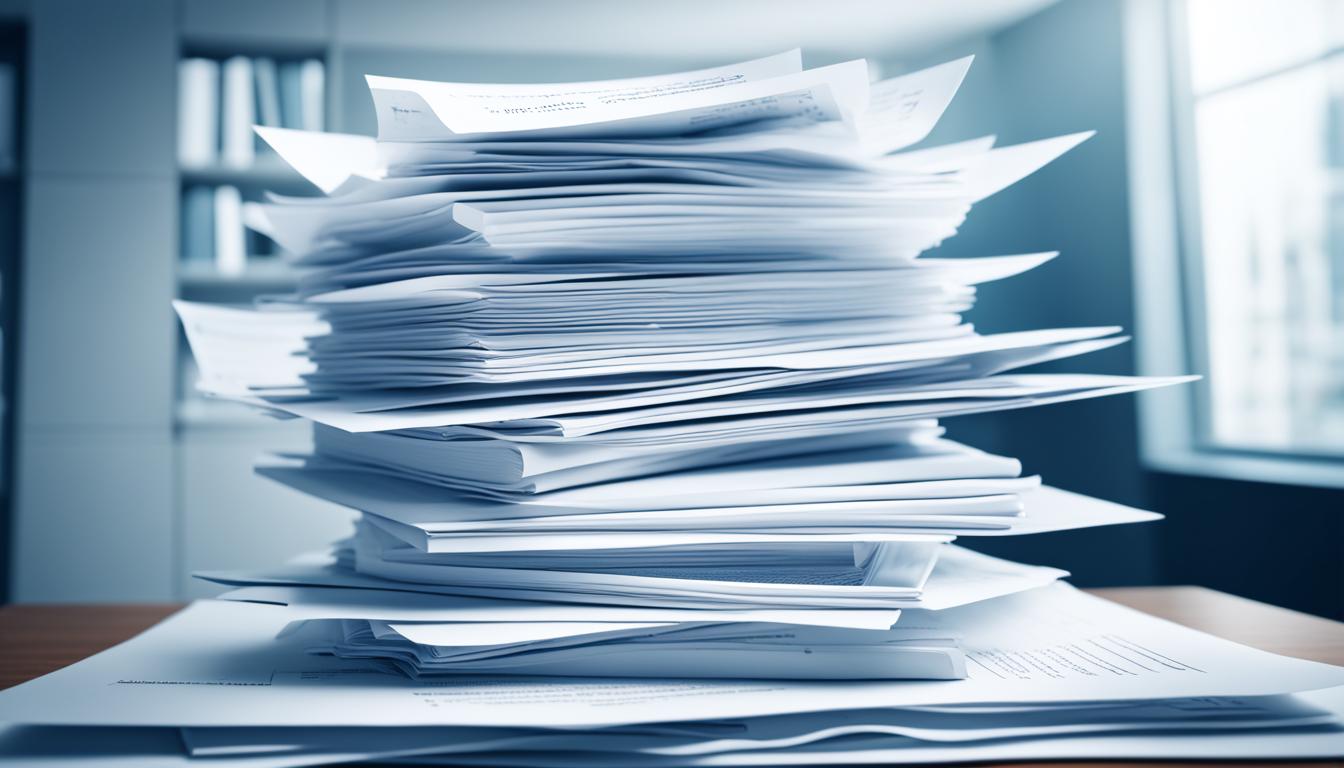
Did you know 95% of college students have cheated at some point? This fact shows we need better ways to catch plagiarism. As a journalist, I’ve seen how AI is changing the fight against cheating.
The internet has made cheating easier. Old ways to check for plagiarism don’t work well anymore. AI is now a key tool to ensure work is original and keep standards high.
AI plagiarism tools, including the versatile AI checker, are game-changers. They can check lots of text fast, comparing it to millions of sources. Thanks to smart algorithms and learning, they catch even hidden copying.
AI helps not just in school but also in the real world. Writers, publishers, and businesses use these tools to protect their work. We’ll see how AI is making us rethink honesty and originality in content.
Key Takeaways
AI plagiarism detection tools can analyze millions of documents within a few seconds
Advanced algorithms can identify paraphrased and rephrased content
AI enhances the efficiency and accuracy of plagiarism detection
These tools benefit educators, students, and content creators alike
AI plagiarism detection is crucial for maintaining academic integrity
Understanding Academic Dishonesty
Academic dishonesty is a pervasive issue that undermines the integrity of educational institutions worldwide. It encompasses various forms of cheating, plagiarism, and misrepresentation of academic work. With the advent of AI-generated content, academic dishonesty has become more sophisticated and challenging to detect. Students can now use AI tools to produce essays, assignments, and research papers that appear authentic, making it harder for educators to maintain academic integrity. Understanding the different types of academic dishonesty, its root causes, and its consequences is essential for both educators and students to uphold the standards of academic honesty.
Understanding Plagiarism in the Digital Age
Plagiarism cases have grown with more digital info. Copying content online has led to both mistakes and intentional cheating. This shows why plagiarism checkers are key in spotting unoriginal work early.
Definition and Types of Plagiarism
Plagiarism means using someone else’s ideas or words without giving credit. There are many types, like direct copying and paraphrasing without saying where it came from. The internet makes checking for plagiarism harder, as content can be changed or translated easily.
An AI checker can effectively identify AI-generated content, ensuring the originality of academic work.
AI content detection offers a solution to these challenges by identifying whether text is authored by humans or generated by AI.
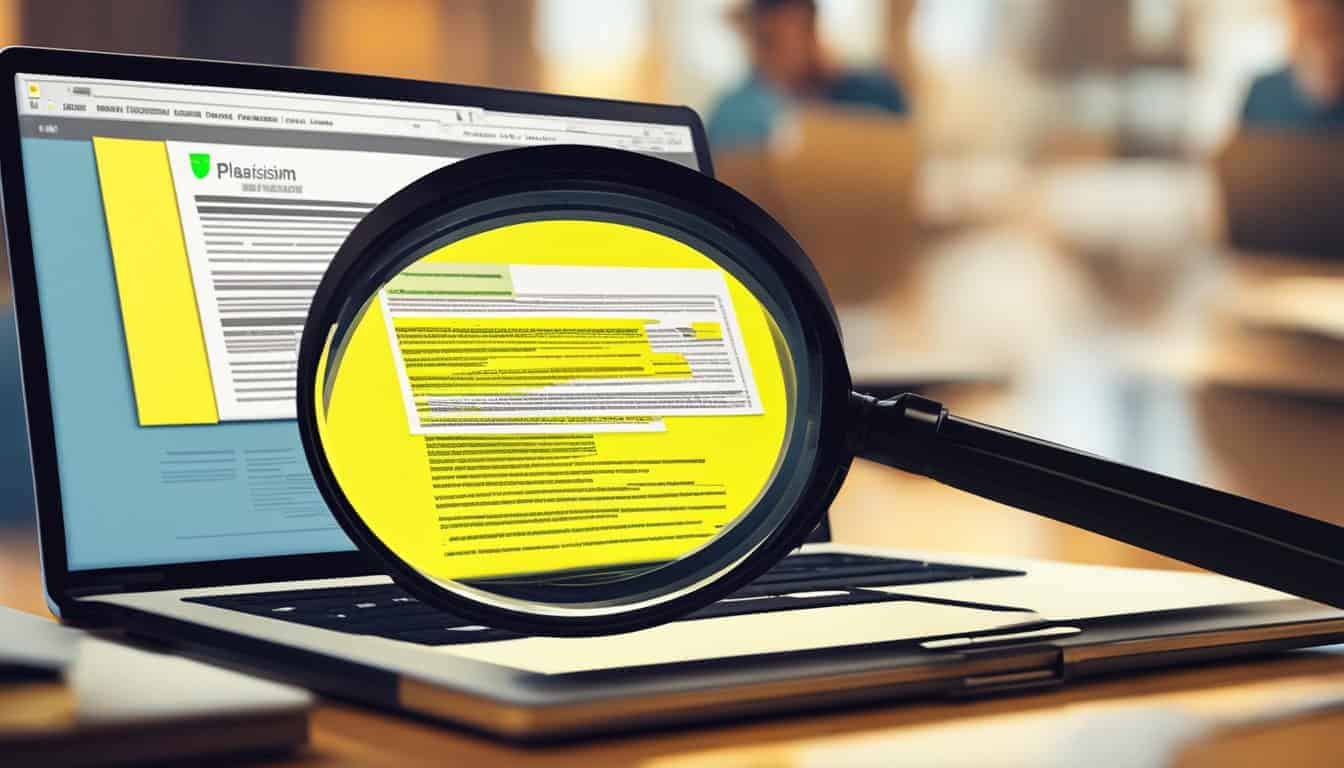
Impact on Academic Integrity
Plagiarism hurts the trust in schools and lowers the value of new research. Schools have strict rules to fight this problem. These rules show how serious plagiarism is in school and push for honest writing.
Challenges in Detecting Plagiarism
Finding plagiarism is now tough. New ways of paraphrasing and cross-language copying make it hard for old plagiarism checkers. This has led to AI tools that look at writing style, syntax, and tone to spot plagiarism better. An advanced ai checker can enhance these capabilities, ensuring content authenticity and maintaining high-quality standards.
The Rise of AI-Generated Content
The rapid advancement of AI technology has led to a surge in AI-generated content. These AI tools can create high-quality text, images, and videos that are often indistinguishable from those produced by humans. While AI-generated content offers numerous benefits, such as automating routine tasks and fostering creativity, it also poses a significant threat to academic integrity. Students can exploit these AI tools to generate essays, assignments, and research papers, making it increasingly difficult for educators to detect plagiarism. This growing trend underscores the need for robust AI detection tools to ensure the originality of academic work and uphold academic standards.
The AI checker is an essential tool in this context, capable of detecting AI-generated content and ensuring academic integrity.
The Need for AI-Powered Plagiarism Detection
The rise of AI-generated content has created a new challenge for educators, researchers, and writers. With the increasing availability of AI tools that can generate human-like text, the risk of plagiarism and academic dishonesty has grown exponentially. Traditional plagiarism detection methods are no longer sufficient to detect AI-generated content, as they rely on matching text patterns and algorithms that can be easily evaded by sophisticated AI tools.
AI-powered plagiarism detection is essential to address this challenge. By leveraging machine learning algorithms and natural language processing techniques, AI-powered plagiarism detection tools can identify AI-generated content with high accuracy. These tools can analyze text patterns, syntax, and semantics to detect subtle differences between human-written and AI-generated content.
Moreover, AI-powered plagiarism detection can help maintain academic integrity by ensuring that students and researchers submit original work. By detecting AI-generated content, educators can prevent plagiarism and promote a culture of originality and creativity. This not only upholds the standards of academic honesty but also encourages students to develop their own ideas and express them authentically.
Plagiarism Checker Tools Evolution
Plagiarism detection tools have come a long way. Early ones just looked for simple text matches in small databases. Now we have AI tools, including the AI checker, that use smart ways to find different types of copied content. Among these, the AI detector stands out for its ability to detect AI-generated content, ensuring authenticity in student essays and other academic settings.
These new tools can find not just exact copies but also changed texts and similar contexts. This makes it easier to check for original content and stop copyright issues. Machine learning has made these tools more accurate to find subtle plagiarism.
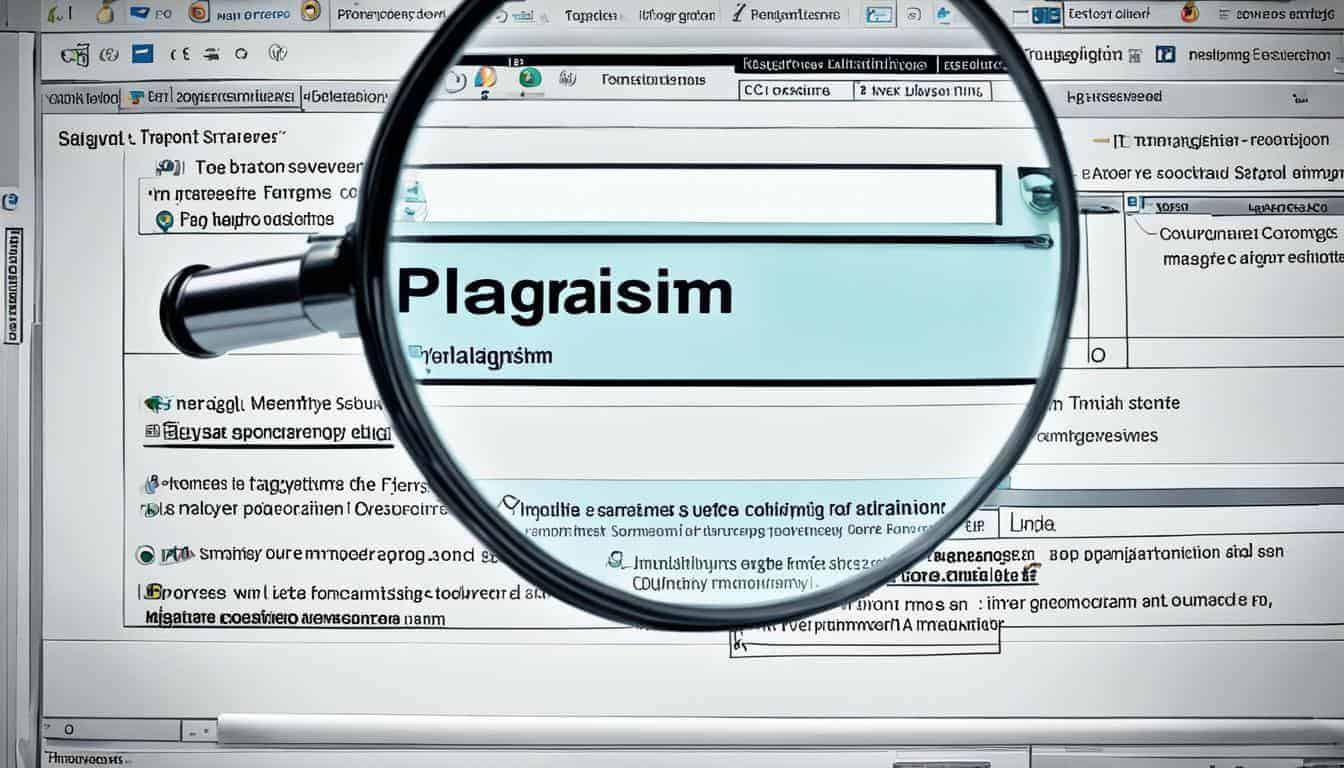
Wow these tools can scan in real-time now. Writers can check for plagiarism as they write. This creates a culture of originality from the start. Some tools even check for copied content in images, audio and video!
It’s clear plagiarism detection tools are popular in schools. Over 180,000 apps related to this topic have been downloaded. Many schools use these tools in their system to keep things honest.
As technology gets better I think plagiarism detection tools will get even smarter. They’ll play a bigger role in keeping things real and trustworthy in school and online.
AI Plagiarism Detection: A Game-Changer
AI plagiarism detection is changing the game in academic honesty. These tools use advanced text matching to find copied content with great accuracy. Machine learning makes this even better.
The AI checker stands out as a key tool in this transformation, offering multifunctional capabilities for detecting AI-generated content and plagiarism.
AI Enhancement of Plagiarism Detection
AI tools, such as the AI checker, can check lots of data fast, enhancing content detection by identifying AI-generated content. They look through big databases to find matches humans might not see. These systems understand context and spot subtle patterns in language.
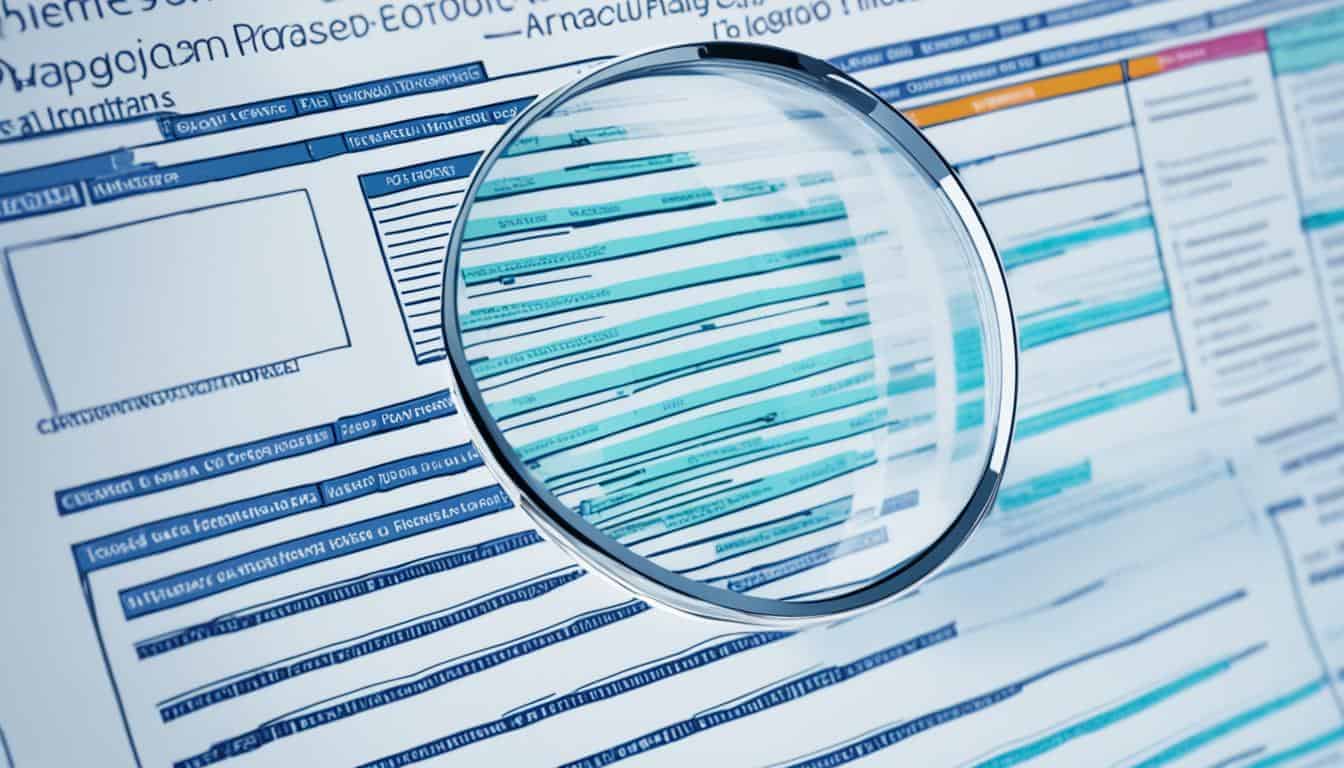
Key Features of AI-Powered Tools for AI Content Detection
One key feature is the AI Detection Score. It tells how much of a student’s work might be from AI. There’s also a Plagiarism Score for non-cited parts. The Paste-Ins Analysis tracks pasted content, and Revision Tracking shows changes over time.
The AI checker incorporates these features, providing a comprehensive solution for detecting AI-generated content and plagiarism.
Advantages Over Traditional Methods
AI plagiarism detection is a big step up. It’s faster and more precise than old methods. These tools catch complex plagiarism that was hard to spot before. They get better with new data, making them a strong tool against cheating.
The AI checker exemplifies these advantages, offering faster and more precise detection of complex plagiarism.
Additionally, these tools help users identify AI-generated text by providing a probability score to determine the likelihood of content being produced by AI.
Detecting AI-Generated Text
Detecting AI-generated text is a complex and evolving challenge that requires sophisticated algorithms and machine learning models. AI detectors employ various techniques, including linguistic analysis, stylistic analysis, and machine learning algorithms, to identify patterns and anomalies characteristic of AI-generated content. These tools analyze the text’s structure, syntax, and style to detect subtle differences between human-written and AI-generated text. The AI checker employs these sophisticated techniques to accurately identify AI-generated text. However, the accuracy of AI detectors can vary based on the quality of the training data and the sophistication of the AI tool used to generate the content. As AI technology continues to advance, so too must the methods for identifying AI-generated text to maintain academic integrity.
Text Matching Algorithms and Natural Language Processing
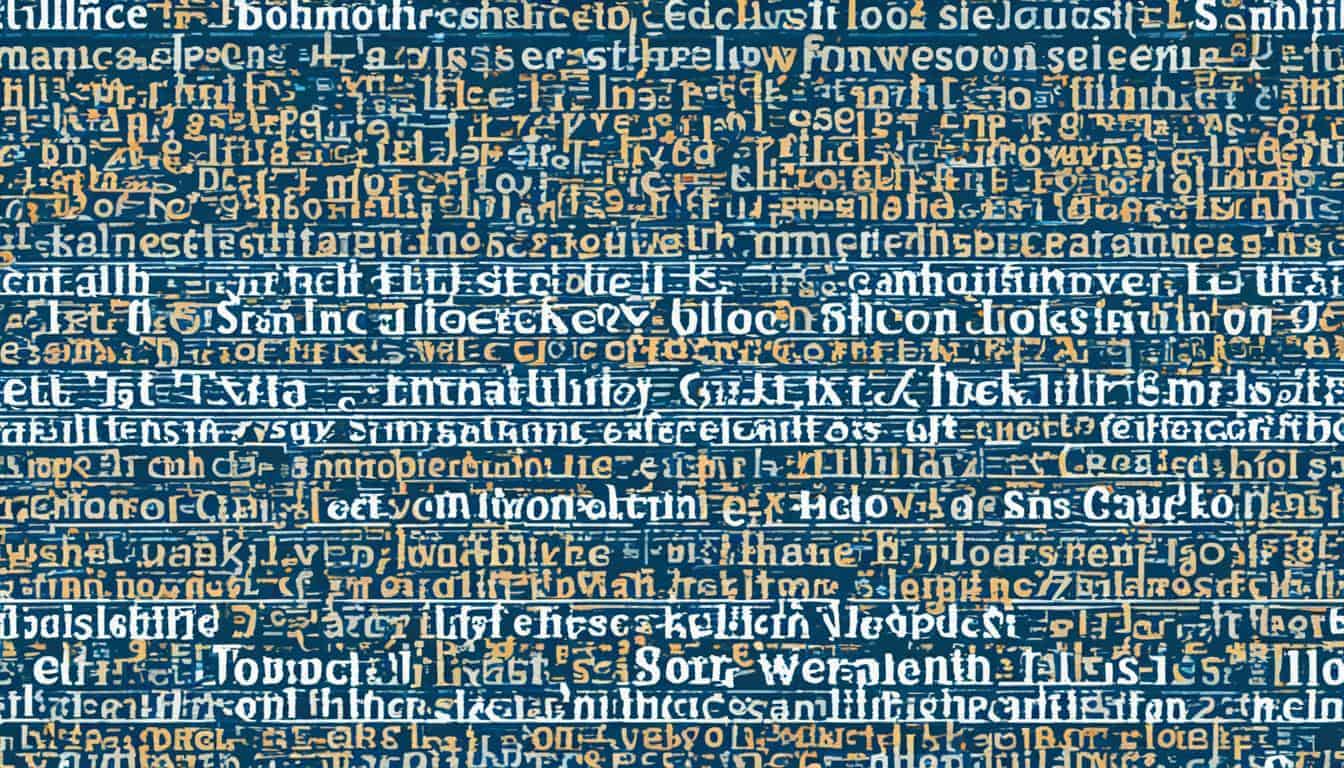
Text similarity analysis is key in modern plagiarism detection. It compares documents to find matching content. Natural language processing goes further by looking at language patterns and meanings. This mix helps spot paraphrased and rephrased content better, making detection more effective.
About 95% of plagiarism checks use natural language processing algorithms. These tools can check millions of papers quickly, much faster than humans. They use top-down and bottom-up parsing to break sentences into parts and find similarities. This method helps catch complex plagiarism more accurately.
Keeping content original is a big worry in today’s digital world. AI writing tools create lots of content, making it hard for old plagiarism detectors. Advanced natural language processing helps. It spots small differences in writing style and sentence structure. This makes it harder for plagiarists to hide. As technology gets better, so does our fight against plagiarism, keeping academic integrity strong.
Machine Learning in Plagiarism Detection
Machine learning has changed how we check for plagiarism. AI tools can look through lots of text quickly. They use smart algorithms to find similar phrases, even if they’re changed.
Supervised Learning Techniques
Supervised learning is key in AI plagiarism detection. Tools like Support Vector Machines and Random Forests learn from labeled data. They can spot copied content very well.
Unsupervised Learning Approaches
Unsupervised learning groups similar texts to find plagiarism. This is great for catching changed content that’s hard to spot.
Deep Learning Models
Deep learning takes AI plagiarism detection further. Convolutional and Recurrent Neural Networks learn complex text patterns. They’re great at finding tricky plagiarism that’s hard to catch.
AI tools are very useful but not perfect. They can miss plagiarism if it’s not in their database. They can also make mistakes. Still, they’re fast and accurate, helping keep our work honest online.
Cross-Language Plagiarism Detection Using AI
Our world is getting more global, and so is plagiarism. With Google Translate checking 20 billion web pages each month, the risk of stealing content across languages is high. AI plagiarism detection is now tackling this big challenge.
Companies like Copyleaks are at the forefront of this fight. They can check for plagiarism in almost 30 languages and are adding more. This is key for keeping content original in our digital world.
AI-powered detection is special because it gets the meaning, not just the words. It spots paraphrasing and idea theft even when the language changes. This is a big win for teachers and businesses, ensuring true work in a world where info moves easily across languages.
Now, we’re moving from just matching text to understanding and keeping ideas whole. This change in plagiarism detection isn’t just about catching cheaters. It’s about promoting originality and giving credit where it’s due in our global work and studies.
Limitations and Challenges of AI Plagiarism Detection
AI plagiarism checkers have big hurdles to overcome for academic integrity. They try to keep content original but aren’t perfect. Let’s look at some main challenges.
False Positives and Negatives
AI detectors can make errors. They might say original work is copied or miss real plagiarism. For instance, Turnitin’s AI tool claims a 98% accuracy but has a 15% error margin. This could wrongly accuse students or let cheaters go unnoticed.
Detecting Sophisticated Techniques
It’s hard for AI to catch complex paraphrasing or idea theft. As AI writing tools get better, finding AI-generated content is harder. Some services say they can make AI text undetectable. This creates a challenge for plagiarism checkers and those trying to cheat.
Ethical and Privacy Concerns
Using AI to check student work raises ethical questions. There’s concern about privacy and bias. Some detectors wrongly flag Black American English more often, showing bias. Also, many detectors don’t share how they work, making it hard to fix these issues.
Addressing AI Misuse in Academia
AI misuse in academia is a growing concern, as students and researchers increasingly rely on AI tools to generate content. To address this issue, educators and institutions must take a proactive approach to prevent AI misuse and promote academic integrity.
One strategy is to educate students about the risks and consequences of AI misuse. By raising awareness about the importance of originality and the potential consequences of plagiarism, educators can encourage students to use AI tools responsibly. This involves teaching students about the ethical use of AI and the value of producing their own work.
Another approach is to implement AI-powered plagiarism detection tools in academic settings. By integrating these tools into the writing process, educators can detect AI-generated content and prevent plagiarism. These tools can provide real-time feedback, helping students understand how to properly cite sources and avoid unintentional plagiarism.
Furthermore, institutions can establish clear policies and guidelines for AI use in academic settings. By defining what constitutes acceptable use of AI tools and what constitutes AI misuse, institutions can promote a culture of academic integrity and prevent AI misuse. Clear policies help set expectations and provide a framework for addressing instances of academic dishonesty.
Institutional Strategies for Combating Academic Dishonesty
Educational institutions must adopt comprehensive strategies to combat academic dishonesty, particularly in the face of AI-generated content. Key strategies include:
Implementing AI detection tools to identify potential plagiarism quickly and accurately.
Educating students about the severe consequences of academic dishonesty and the importance of maintaining academic integrity.
Encouraging students to use AI tools responsibly and ethically, emphasizing the value of original work.
Developing clear policies and procedures for addressing instances of academic dishonesty.
Providing resources and support for students struggling with academic writing and research to reduce the temptation to cheat.
By integrating these strategies, institutions can foster a culture of honesty and integrity, ensuring that academic achievements are genuinely earned.
Best Practices for Implementing AI-Powered Plagiarism Detection
Implementing AI-powered plagiarism detection requires careful consideration of several factors. Here are some best practices to ensure effective implementation:
Choose a reliable AI-powered plagiarism detection tool: Select a tool that has been tested and validated for accuracy and effectiveness. Look for features such as real-time feedback, comprehensive database coverage, and the ability to detect AI-generated content.
Integrate the tool into the writing process: Use the tool as part of the writing process, rather than as a standalone solution. Encourage students to use the tool to check their work before submission, fostering a habit of originality and proper citation.
Educate students and researchers about AI misuse: Raise awareness about the risks and consequences of AI misuse and promote responsible use of AI tools. Provide training sessions and resources to help students understand how to use AI tools ethically.
Establish clear policies and guidelines: Define what constitutes acceptable use of AI tools and what constitutes AI misuse. Ensure that these policies are communicated clearly to students and staff, and enforce them consistently.
Monitor and evaluate the tool’s effectiveness: Regularly monitor and evaluate the tool’s effectiveness in detecting AI-generated content and preventing plagiarism. Gather feedback from users and make necessary adjustments to improve the tool’s performance.
By following these best practices, educators and institutions can effectively implement AI-powered plagiarism detection and promote academic integrity. This approach not only helps in detecting potential plagiarism but also fosters a culture of honesty and originality in academic work.
Integrating AI Plagiarism Detection in Academic Institutions
Academic places are now using AI to check for plagiarism. These tools use smart algorithms to find similar texts quickly. They help keep academic work honest.
AI plagiarism checkers give feedback in real-time. They help students learn how to cite sources right. This stops cheating before it starts. Teachers also save time and effort checking student work.
Adding AI plagiarism detection needs a good plan. Schools must set clear rules for using these tools. They should teach students about citing sources correctly. It’s important to balance honesty in school with privacy concerns. Some schools make assignments that require deep thinking, making AI cheating harder.
AI plagiarism tools are very useful but not flawless. They can sometimes mistake legitimate work for plagiarism. That’s why they should be part of a bigger effort to encourage honesty, not the only way to check for cheating.
AI plagiarism detection has changed how we see academic honesty and originality. Tools like ChatGPT quickly gained 1 million users, showing their big impact. These tools are changing how we think about academic honesty.
But, there’s a big challenge. Half of students might use AI tools even if it’s not allowed. Yet, AI plagiarism detection is getting better, with accuracy from 33% to 81%. This tech helps catch cheaters and lets teachers focus on more important tasks.
Looking forward, AI will be key in keeping academic standards high. It’s not just about catching cheaters. It’s about encouraging original thinking. By using this tech, we’re making a future where AI and human creativity work together. This will keep academic integrity at its best.
Future Directions in AI Detection Technology
The field of AI detection technology is rapidly evolving, with several promising directions for the future:
Developing more accurate and sophisticated AI detectors capable of identifying AI-generated content with high precision.
Integrating AI detection tools with learning management systems and traditional plagiarism checkers to provide a comprehensive solution.
Creating AI-powered tools that assist educators in detecting and preventing academic dishonesty more effectively.
Exploring the use of blockchain technology to create a secure and transparent record of academic work, ensuring its authenticity.
Establishing standards and guidelines for the responsible use of AI-generated content in academic settings.
As AI detection technology advances, it will play a crucial role in maintaining academic integrity and promoting original thinking in educational institutions.
